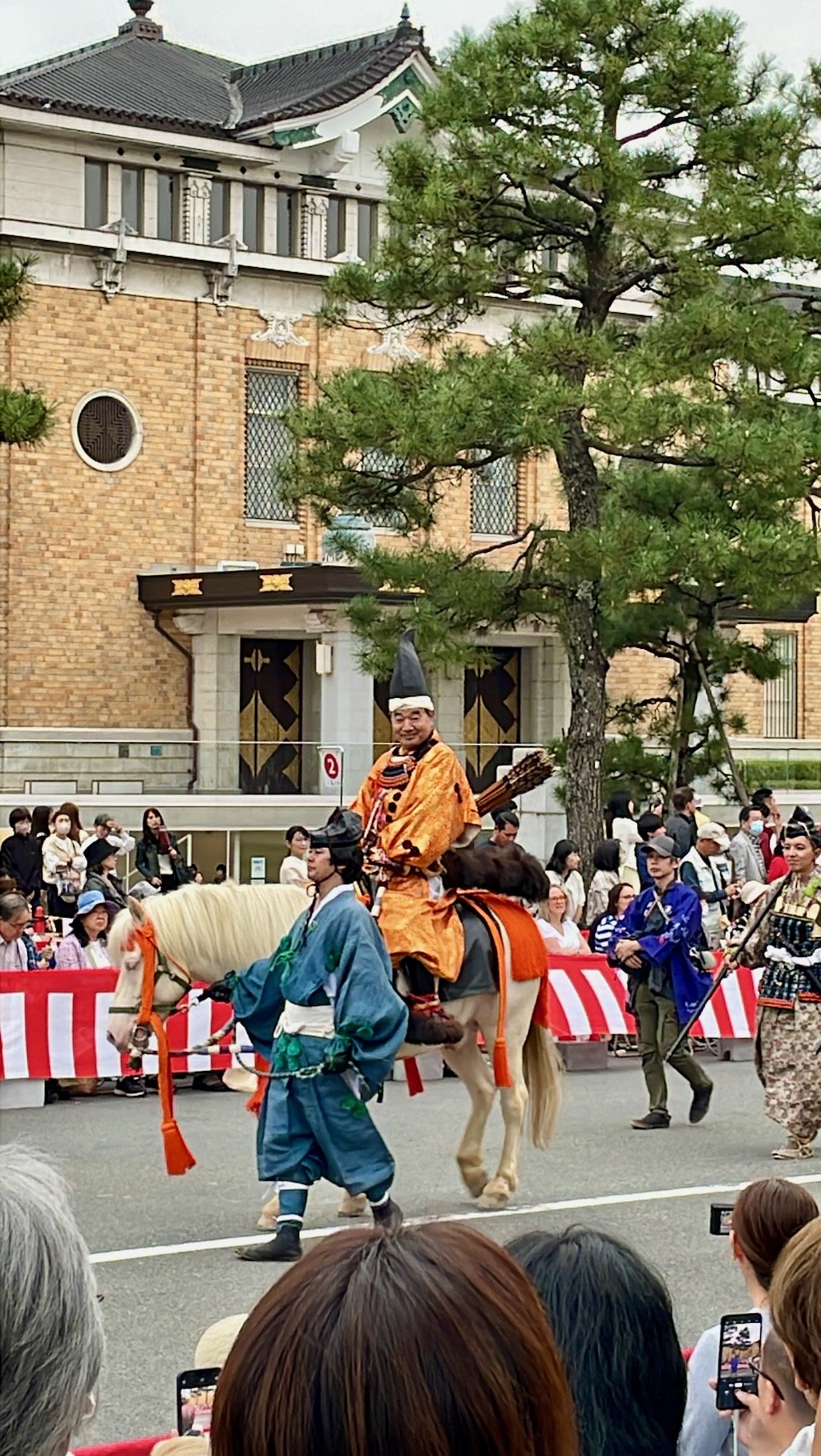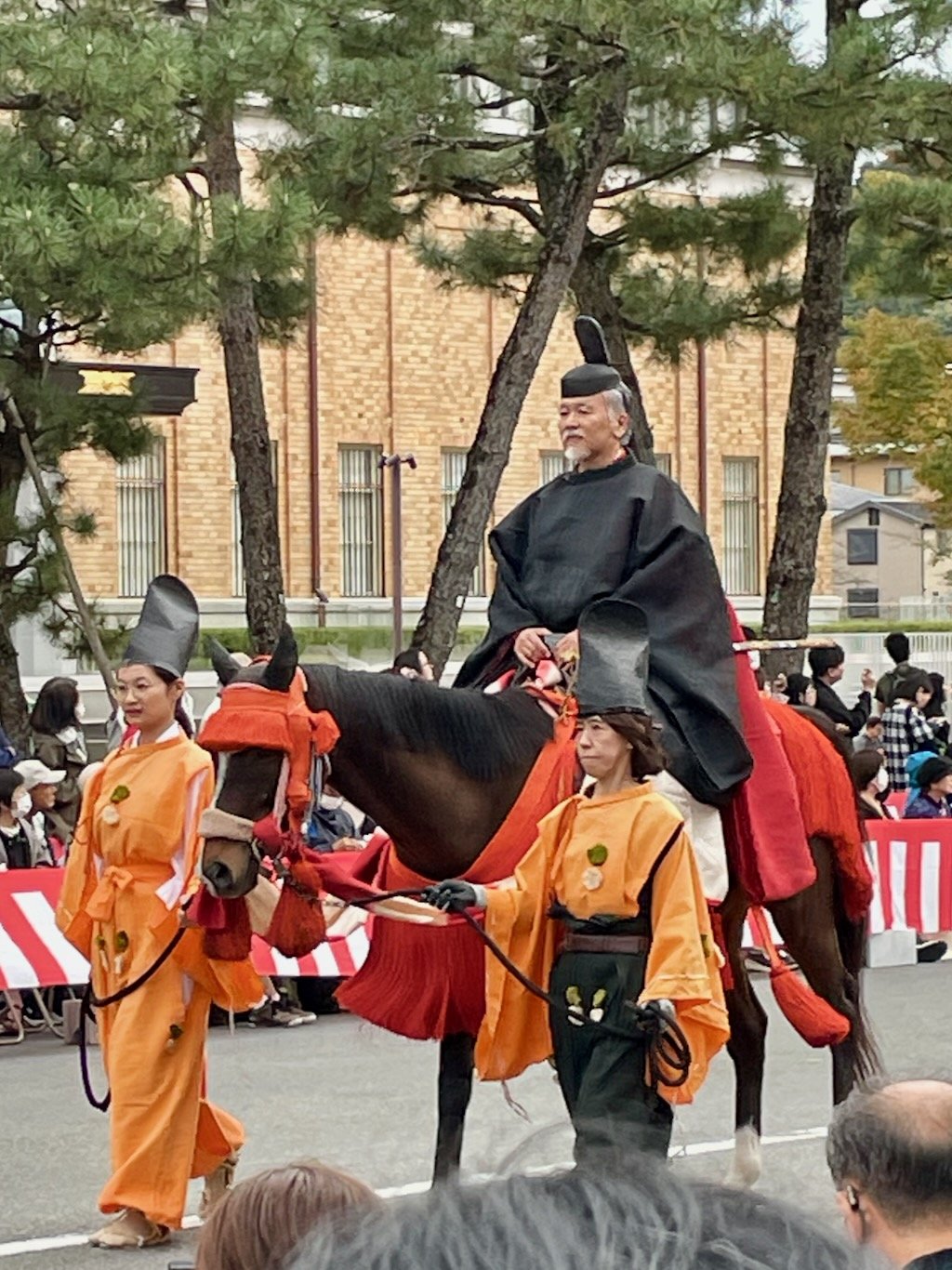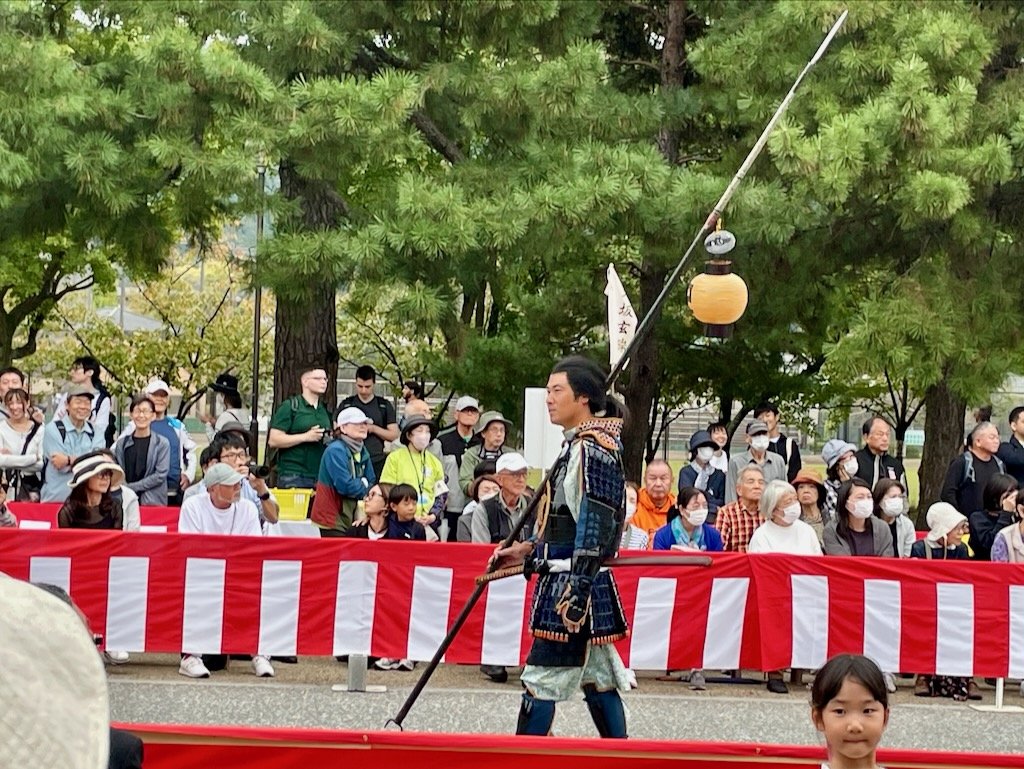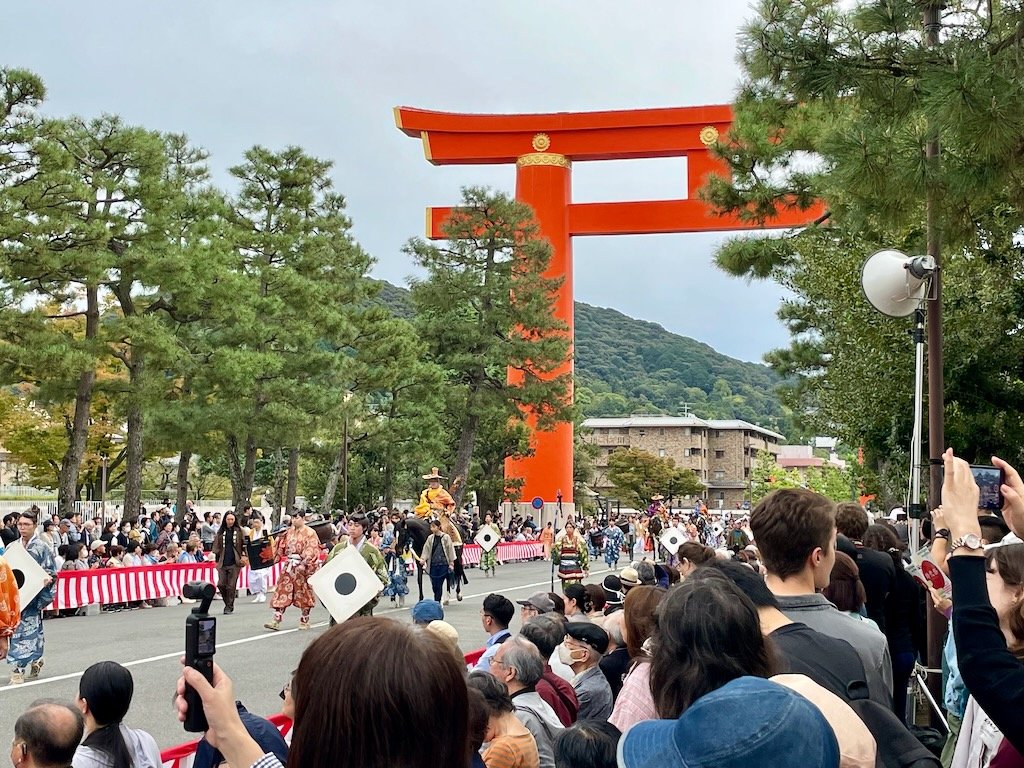Jidai Matsuri - Kyoto
If you're visiting Kyoto in October, don’t miss the Jidai Matsuri (Festival of the Ages). This spectacular event showcases 1,300 years of Japanese history through a grand procession of over 2,000 participants, all dressed in period costumes representing significant historical figures.
The festival begins in the gardens of the Kyoto Imperial Palace and takes place annually on October 22nd (or the following day if it rains). From there, the procession winds its way to Heian Jingu, offering a journey through centuries of history.
The procession starts with the Meiji Restoration period in reverse chronological order spanning 8 periods: Edo (1600 - 1868), Azuchi Momoyama (1568 - 1600), Muromachi (1338 - 1573), Yoshino (1333- 1392), Kamakura (1192 - 1333), Fujiwara (794 - 1185), Enryaku (782 - 806).
Tomoe Gozen was a legendary female samurai from the late Heian period, renowned for her exceptional skills in archery and swordsmanship. Serving under Minamoto no Yoshinaka, she fought bravely in the Genpei War and is celebrated for her courage in a male-dominated warrior culture.
During the Jidai Matsuri, geisha or maiko often portray Tomoe Gozen, honoring her strength and grace. Their elegant attire and stylized movements capture her iconic warrior spirit, blending tradition with artistry to represent one of Japan's most revered historical figures.
Sei Shonagon and Murasaki Shikibu are portrayed, embodying the rich cultural and intellectual legacy of the Heian period. Sei Shonagon, known for her sharp wit and keen observations, served as a lady-in-waiting to Empress Teishi and is celebrated for her work, "The Pillow Book," which offers a glimpse into court life and the aesthetics of her time.
Murasaki Shikibu, also a lady-in-waiting, is renowned for her epic novel "The Tale of Genji," often considered the world's first novel, which explores themes of love, politics, and the complexities of human relationships. Their presence in the festival highlights the significant contributions of women to Japanese literature and culture.
On this day, you'll be transported from modern Kyoto to the past, as the ceremonial procession carries a magical atmosphere. The experience is both captivating and immersive.
If you attend, consider purchasing a booklet that provides detailed information about the historical periods, figures, and attire represented in the parade—it's a worthwhile guide to enrich your experience.
















